Tropical Sangria contains guava nectar spiked with crisp white wines, plenty of liqueurs and spirits, and studded with tropical fruits. This sangria is very unassuming. It’s perfectly balanced in flavor, which means it sneaks up on you. If you’re in the market for a pitcher drink to add to your next BBQ or cookout menu, this Topical Sangria is it.
This recipe is for those of legal drinking age only.
*This post was originally published in August 2021. I’ve updated the article to make it more concise.*
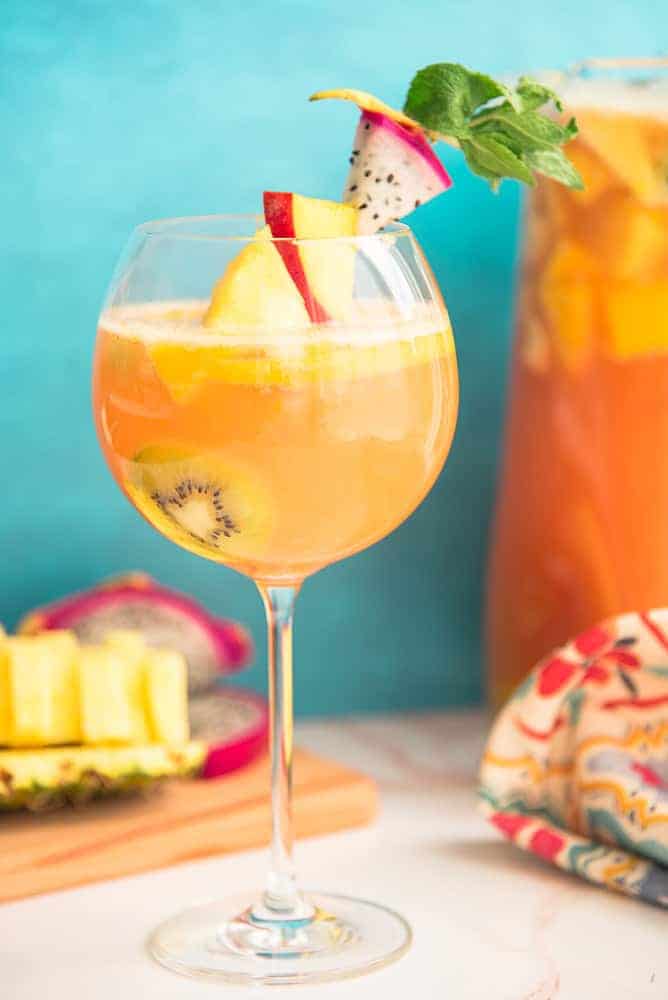
What is Sangria?
There is no “set in stone” recipe for authentic Iberian (namely Spain and Portugal, where the drink is said to have originated) sangria. As with many recipes, each country, town, village, and family have its own version. Simply put, sangria is a wine drink that has bits of chopped fruits stirred into it. Some recipes like this one add spirits or liqueurs to the drink, while others only include wine. Red, dry wine is the most commonly used wine in sangria, though white wines are also used. White wines create a lighter sangria, so it’s commonly served during the summer.
Fun fact: sangría means “bleeding” in Spanish. You can see what inspired its name when handed a glass of red sangria. Have no worries, though. This version is a little less “Dracula.”
What is a Tropical Sangria?
A tropical sangria differs from a red sangria in that the drink’s base is dry white wine instead of red. This version includes pineapple, mango, and kiwis instead of fruits like apples, pears, or berries. You can add your favorite berries or fruits, but these stay true to the tropical vibe of my sangria. In addition to the white wine, though, I amp up the ABV by mixing in various spirits and liqueurs, like rum and triple sec (as well as a bunch more).
How Do I Sweeten My Sangria?
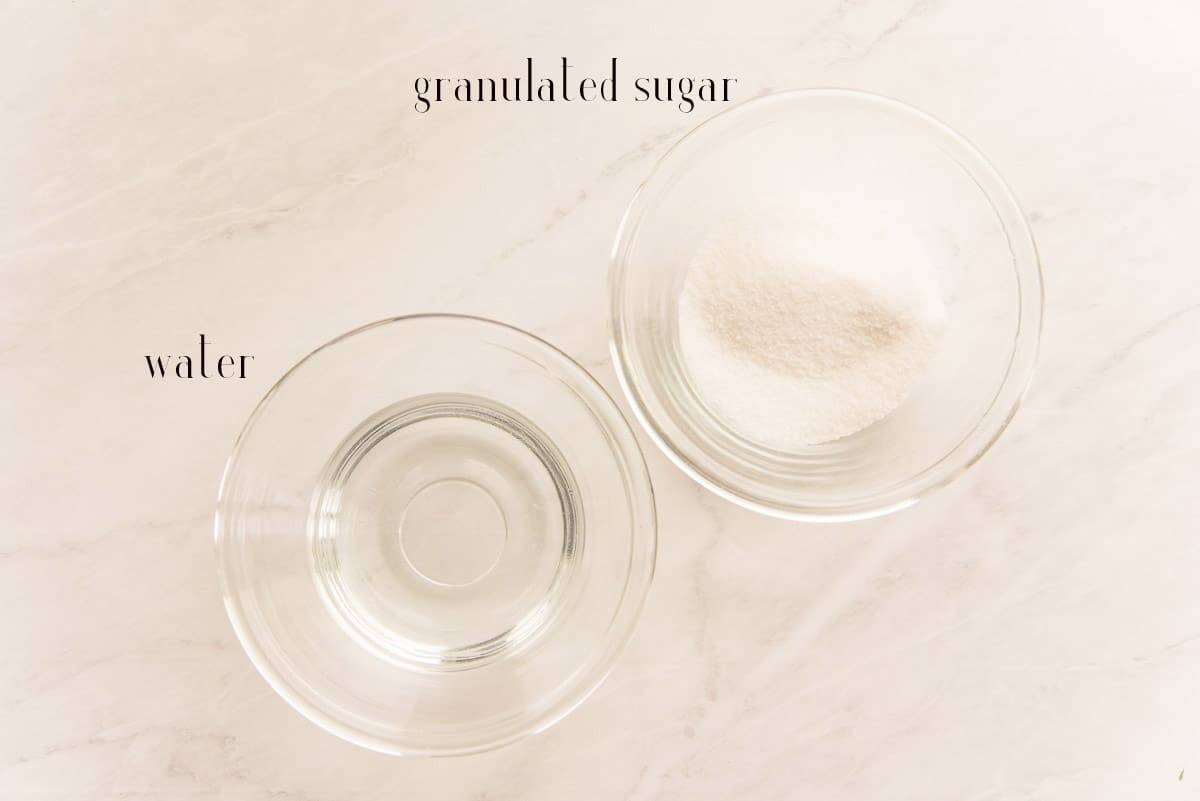
You use simple syrup to sweeten cocktails like this sangria because it doesn’t make your drink gritty. Simple syrup is just equal parts sugar and water brought to a boil to dissolve the sugar, then cooled.
In a small saucepot, stir the sugar and water together. Bring this mixture to a simmer over medium heat, occasionally stirring until the sugar dissolves. This will only take 1-2 minutes. Once the sugar dissolves, turn the stove off and remove the pot to a cool surface. Allow the simple syrup to cool in the pot, or pour it into a bottle and, once cool, store it in the fridge for up to one week.
This simple syrup is easily doubled, so if you make cocktails on the weekend as we do, making a big batch is a good idea.
Do I Have To Sweeten The Tropical Sangria?
You can omit the simple syrup if you prefer a tart, less sweet sangria. You’ll still taste some sweetness between the fruit juices and the liqueurs in this recipe.
After the simple syrup cools completely, pour it into a large glass pitcher. You’re going to mix everything in the same pitcher you plan to serve from, so make sure the pitcher is a decent size. If you don’t have a glass pitcher, plastic will also work.
What Are The Rest Of The Tropical Sangria’s Ingredients?
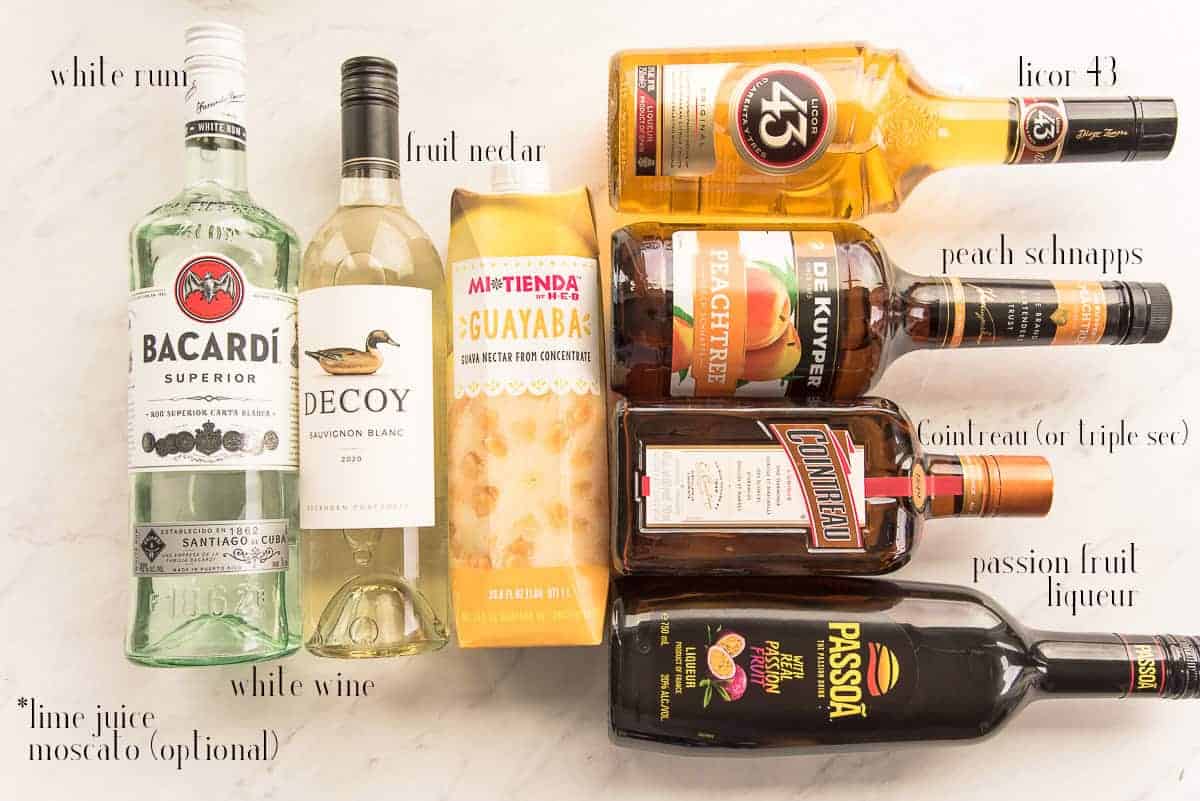
The ingredients needed to make tropical sangria are your favorite dry white wine, white rum, Licor 43, peach schnapps, Cointreau, Passoã, guava nectar, fresh lime juice, and Moscato. The Moscato is a float, so you will top the finished sangria with it. It also means you can omit it if you prefer to. You can also replace Moscato with more white wine for a crisper flavor in the finished sangria.
If you don’t have, don’t like, or don’t care to buy any of the liqueurs mentioned above, you can replace them with my suggestions below. Also, don’t feel like you have to go out and buy big bottles of these liquors. If your liquor sells mini bottles, you can grab them instead. A mini bottle holds 1/4 cup of booze, which is exactly how much of each you’ll use, except for the rum. And, of course, the wine.
Why Add So Many Spirits And Liqueurs?
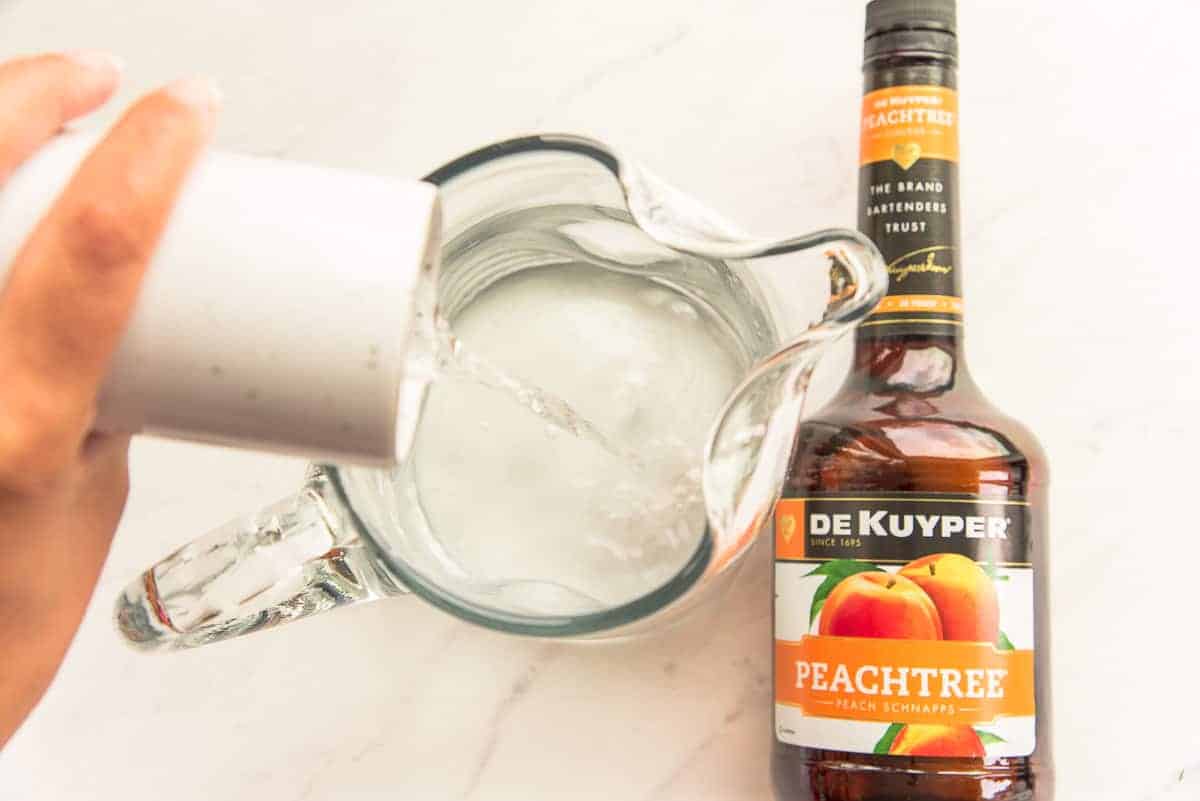
When balanced well, a tropical sangria made with spirits is quite enjoyable. One of the first liqueurs in this tropical sangria is peach schnapps, a sweet, 30-proof liqueur made from fruit syrup mixed with grain spirits.
Add the peach schnapps to the pitcher with the simple syrup.
If you don’t feel like buying peach schnapps, you can replace it with apricot, grapefruit, or a pear liqueur instead.
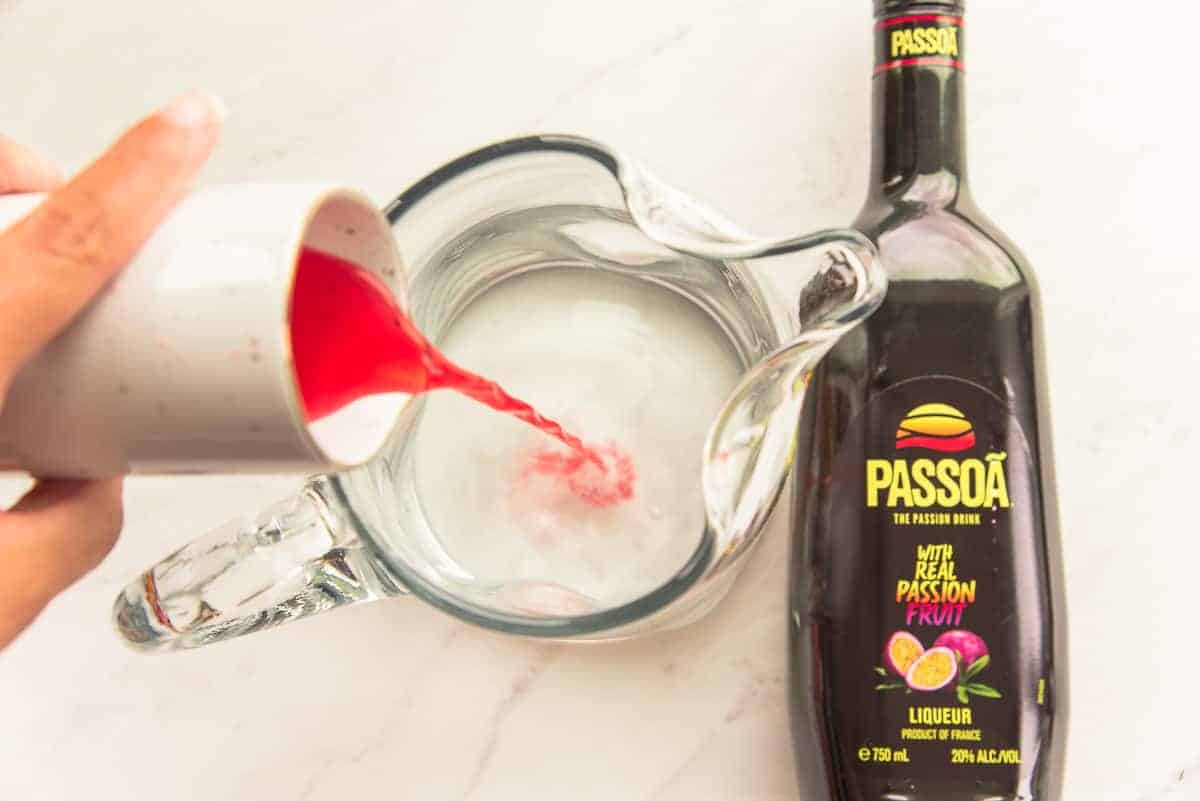
Passoã contains real passion fruit and grain alcohol. It’s a lighter spirit that’s only 20% ABV. It’s been hit or miss finding passoã in liquor stores recently. You can replace it with the same amount of passion fruit juice, pomegranate liqueur, or Chambord (black raspberry liqueur) if you have trouble locating it.
Add the passoã to the pitcher.
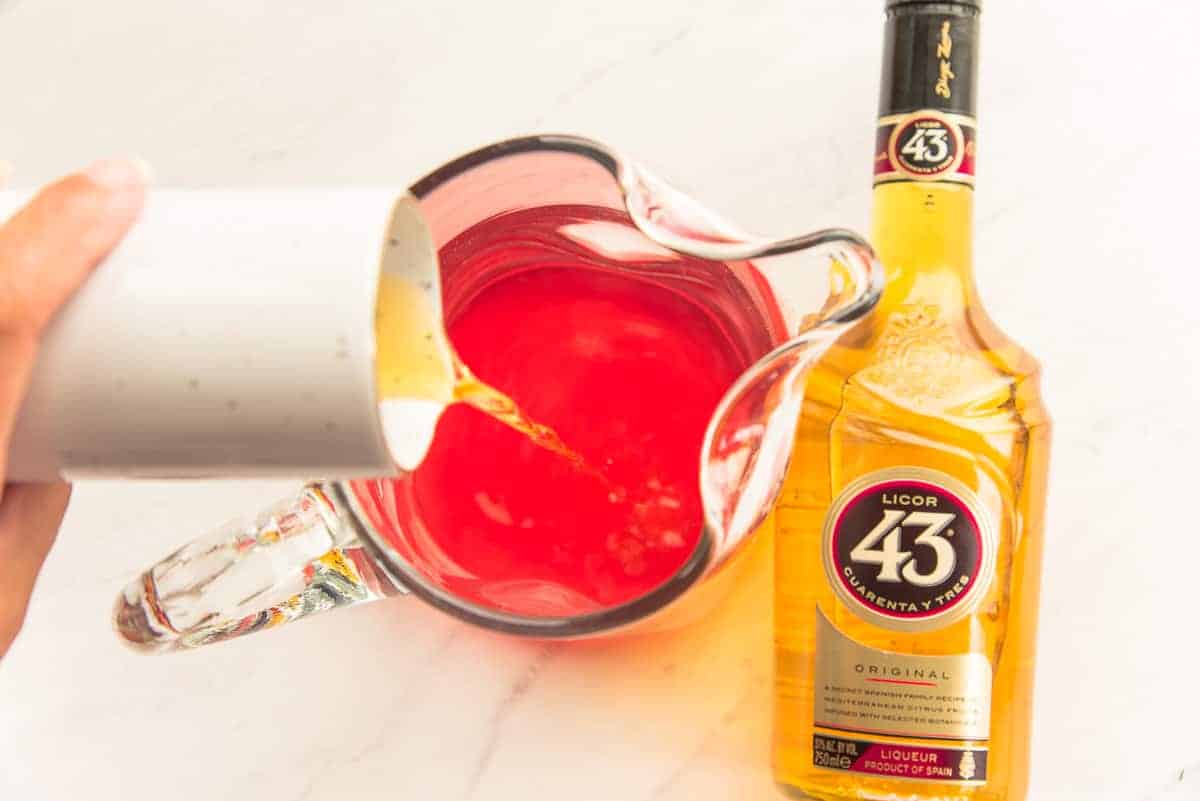
Licor 43 has a citrusy-vanilla flavor and mixes so well with many other flavors. It is also amazing on the rocks. Good replacements are more peach schnapps or more of the Cointreau (below).
Add the Licor 43 to the pitcher with the others.
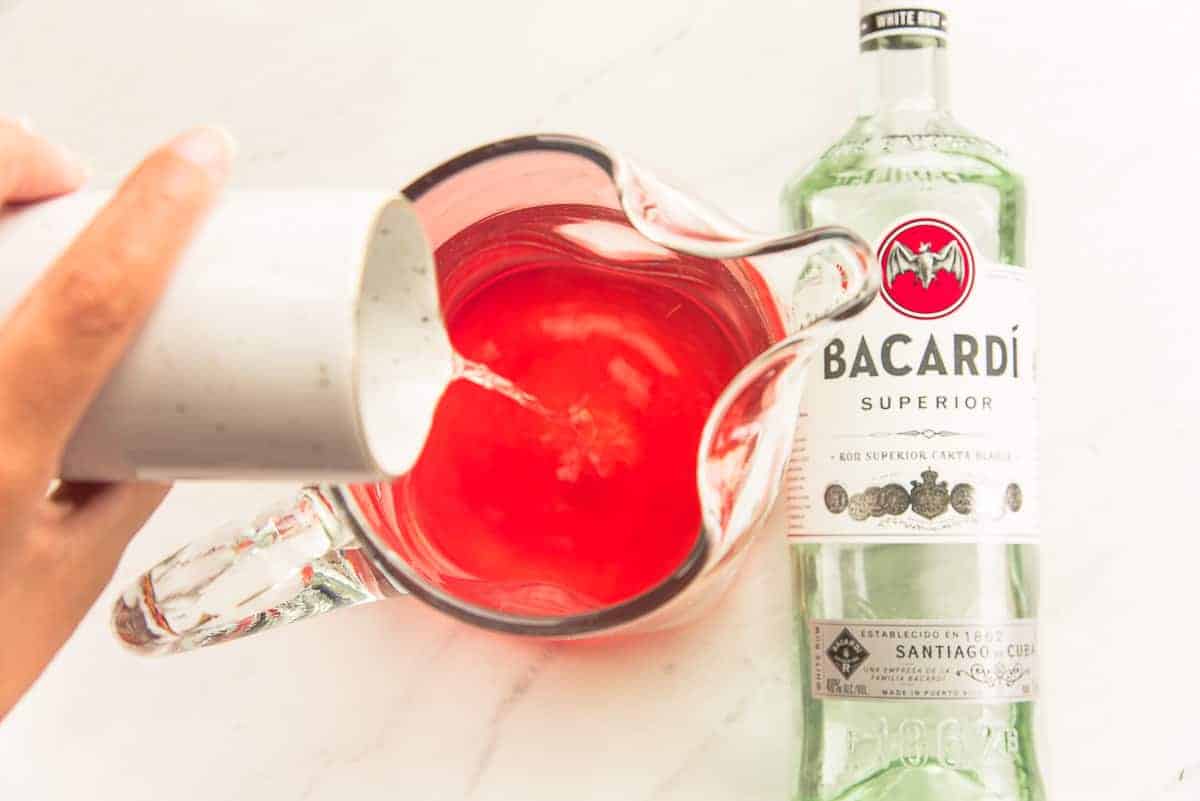
Rum is not a traditional ingredient in tropical sangria. However, it is a traditional ingredient in the tropics, especially in Puerto Rico. If you don’t have rum, use tequila blanco (they also serve that in the tropics) or vodka. Vodka isn’t tropical, but it works.
Add white rum and not a darker rum. Dark rums have caramel or molasses notes that will muddy the bright fruitiness of the other ingredients.
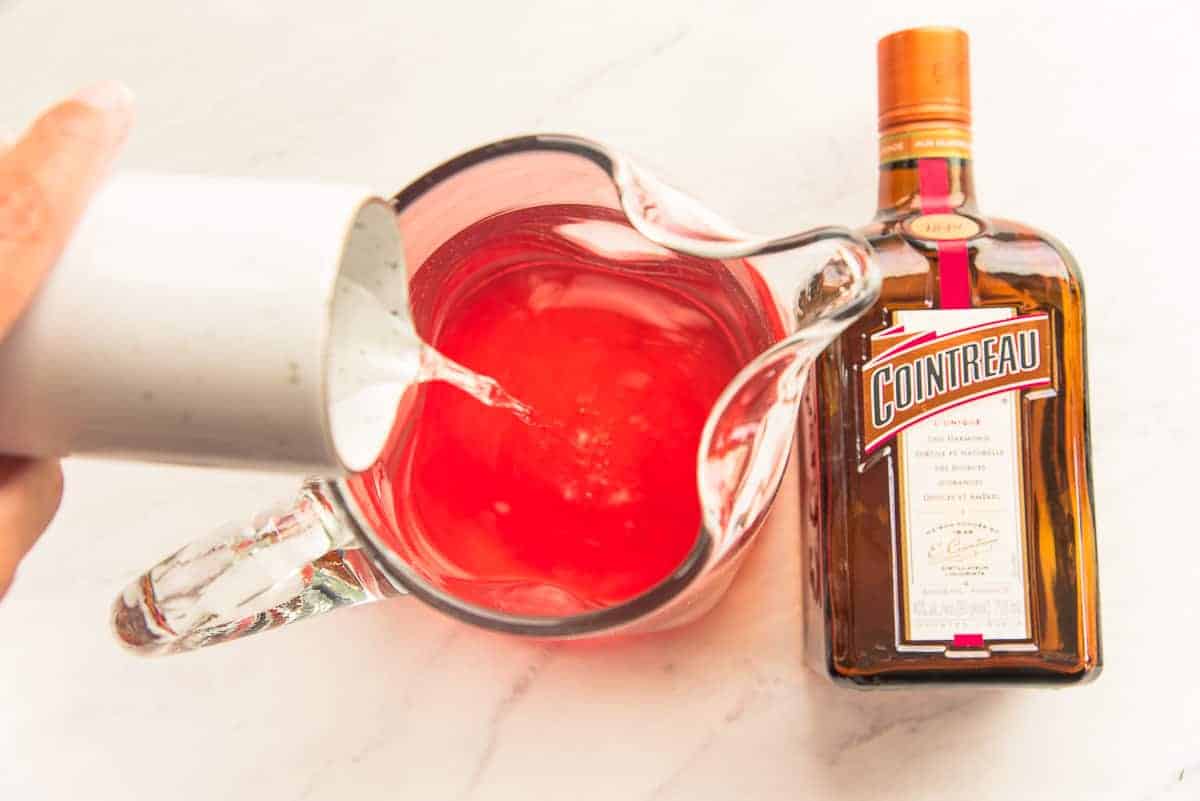
Finally, Cointreau adds more citrus flavor to the sangria. You can replace it with more Licor 43, Grand Marnier, or your favorite brand of triple sec. Orange curaçao works here too.
Add this to the pitcher.
Can I Replace The Guava Nectar With Another Juice?
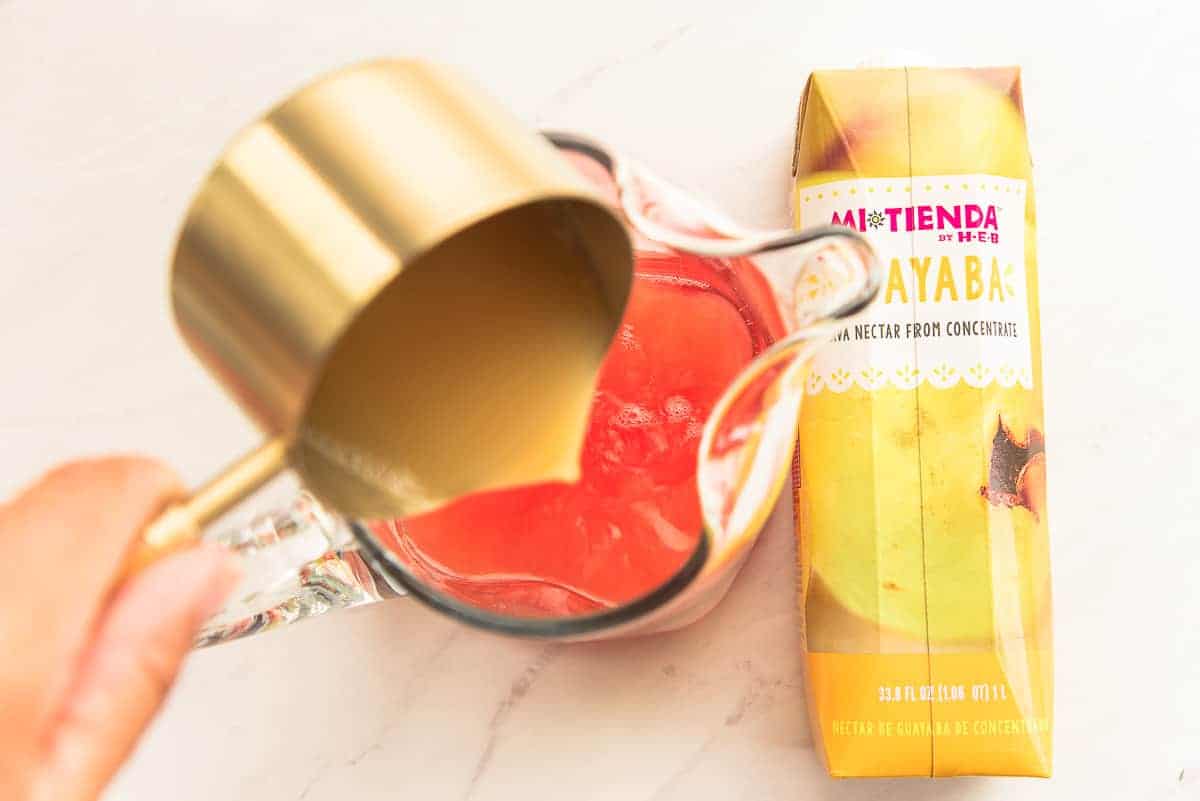
Add the guava nectar to the pitcher. Guava is a very common fruit in the tropics. It’s sweet and sour, and its nectar is thicker, similar to pear juice.
You can replace the guava nectar in this tropical sangria with passion fruit juice, soursop (guanabana), mango nectar, or more pineapple juice.
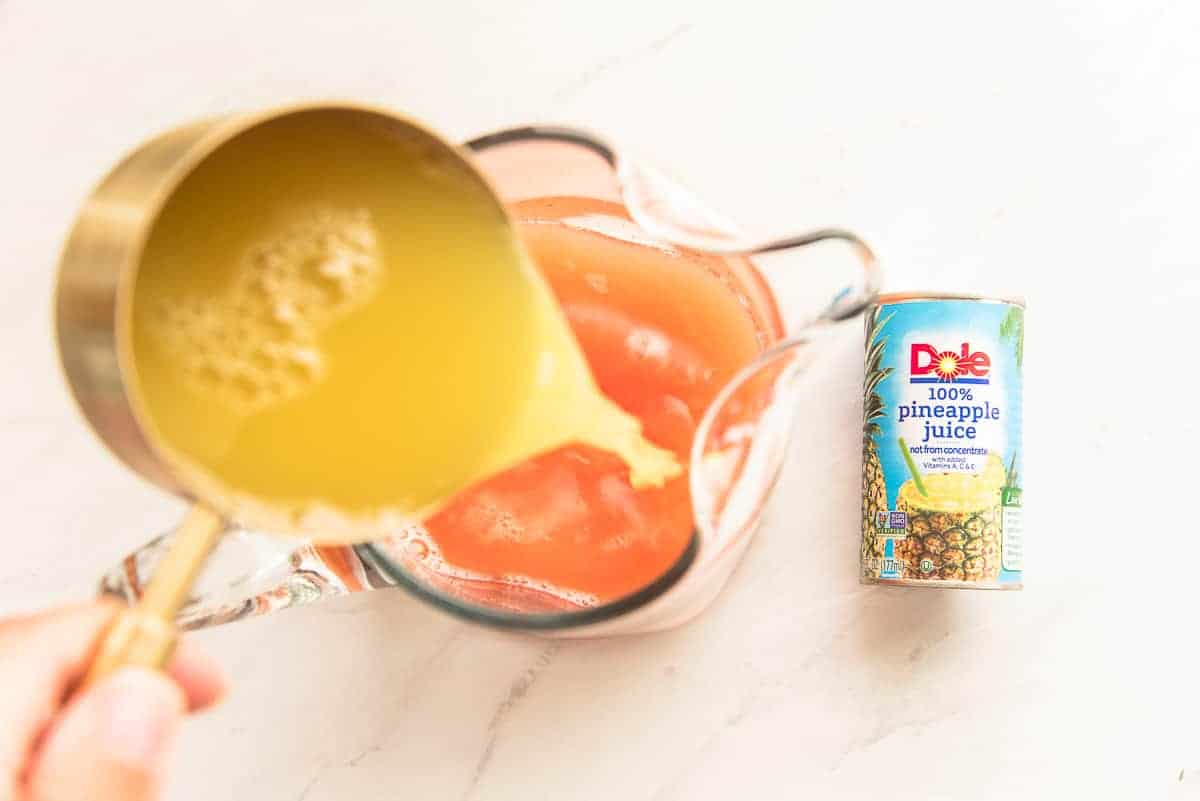
Pineapple juice tastes floral, tart, and bright, so it’s a very popular fruit in the tropics where it grows. You can replace it with more guava nectar or orange juice.
Lime juice adds a tartness that balances out the rest of the sweeter tastes in this tropical sangria. Because of that, I recommend only using fresh lime juice in this recipe. Add the juice of one large lime to the rest of the ingredients.
What’s The Best Wine For Tropical Sangria?
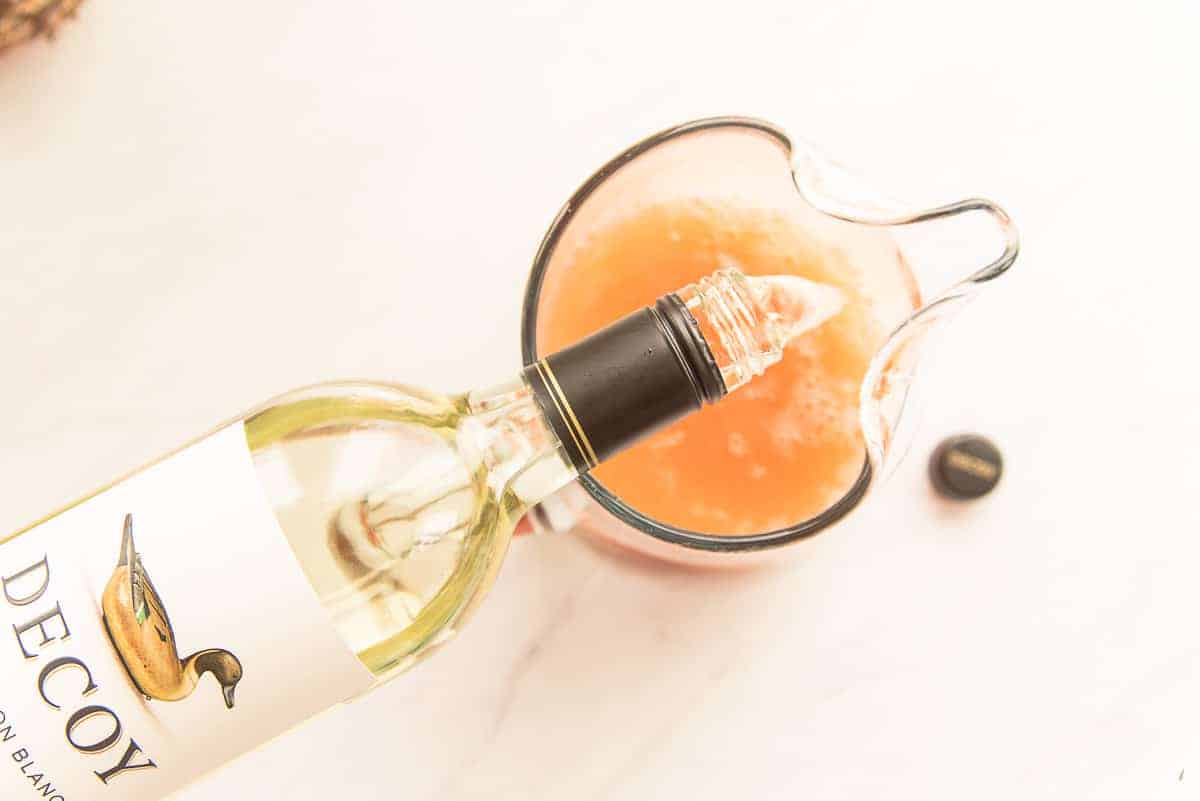
The best wine for a tropical sangria is a dry white wine such as a sauvignon blanc, pinot grigio, or dry Reisling. Using a sweet white will make the tropical sangria too sweet.
Add the wine to the pitcher.
How Far Ahead Can I Prepare The Tropical Sangria?
Stir the pitcher’s contents with your cocktail stirrer or a long-handled spoon. Chill the mixture for 1 hour to allow all those individual spirits and liqueurs to marry together.
You can mix the tropical sangria a week before serving it and keep it stored in a covered container in the refrigerator.
Which Tropical Fruits Do I Add To This Sangria?
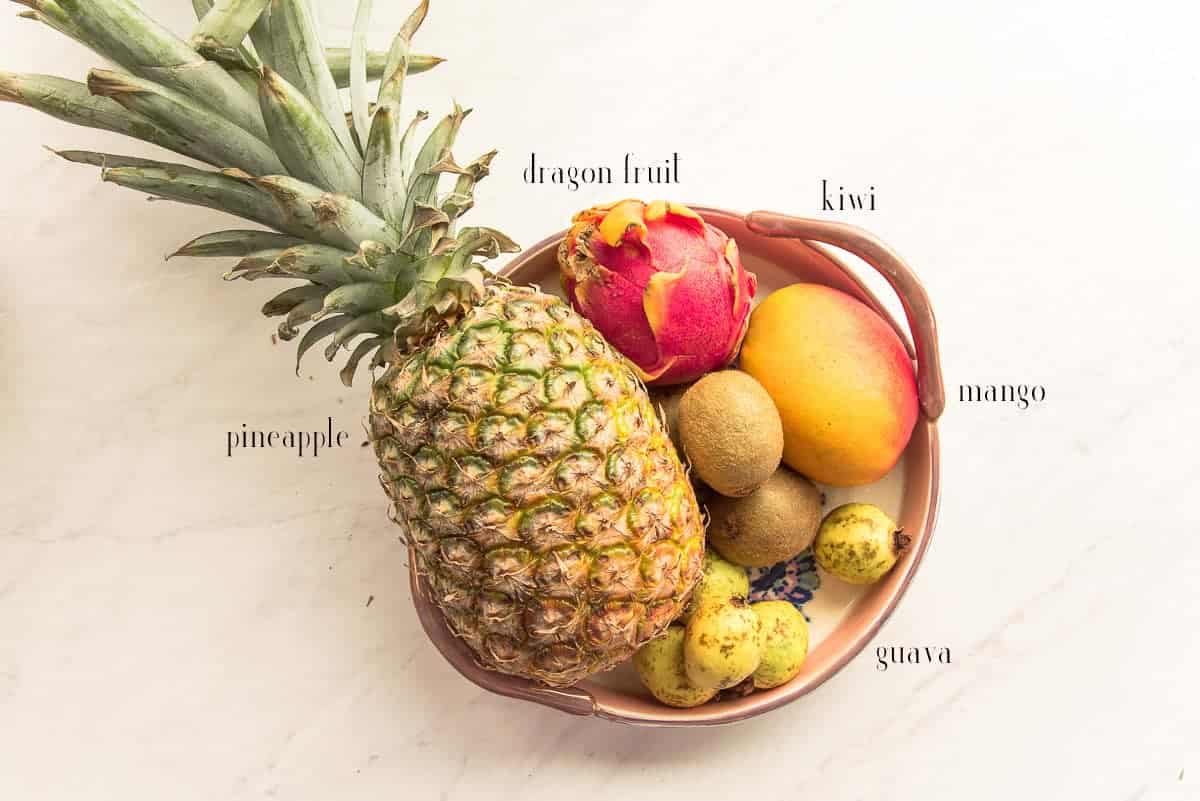
You can add your favorite tropical fruits to this sangria. You can even add some non-tropical fruits. Some of my favorites are:
- pineapple chunks
- mango chunks
- sliced kiwis
- Asian pears
- carambola (starfruit)
- oranges
If you can’t find pink guavas or dragon fruit (pitaya), you can omit them. They look amazing, especially when used as a garnish, but they offer nothing in flavor. Save the money and use something else.
Here are some non-tropical fruits you can add in place of (or instead of) those listed above:
- apple chunks
- raspberries
- blackberries
- blueberries
- sliced strawberries
- pear chunks
- peach chunks
How Far Ahead Can I Add The Fruits?
Add 3 or 4 of your favorite fruits to the pitcher with the rest of the sangria mixture.
Adding the fruit 1-2 hours ahead (or up to 8 hours) of when you plan to serve the tropical sangria is best. This allows the fruits to impart their flavor into the sangria and gives them time to absorb some of the alcohol.
Why does that matter? Because no one ever said no to a boozy fruit salad, that’s why.
How Can I Make My Tropical Sangria More Refreshing?
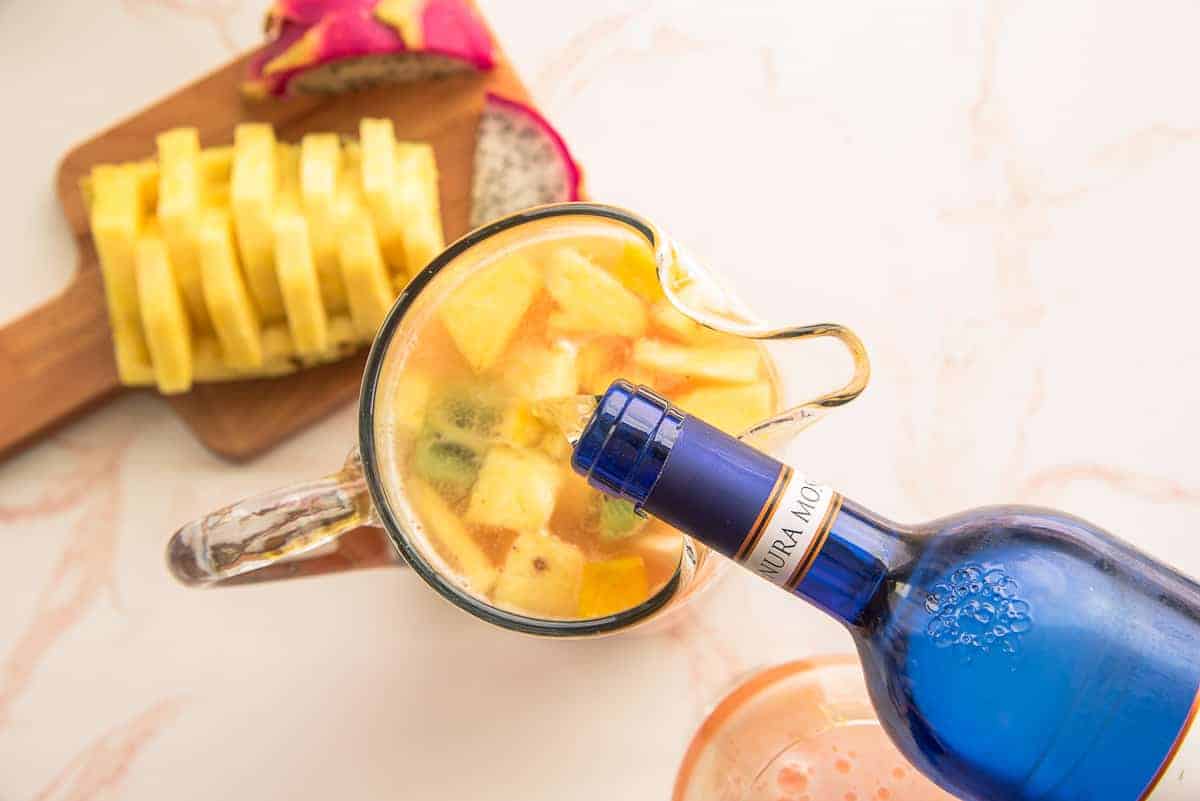
I read that as: “How can I make my tropical sangria more boozy?”
You can float Moscato on top of the sangria to make it more refreshing. Another option is to serve it on the side so guests can add it to their glasses later. If you don’t care about bubbles, you can add another bottle (or half a bottle) of white wine instead of Moscato.
Store the tropical sangria in the fridge until you’re ready to serve it.
What Are The Best Glasses To Use When Serving Sangria?
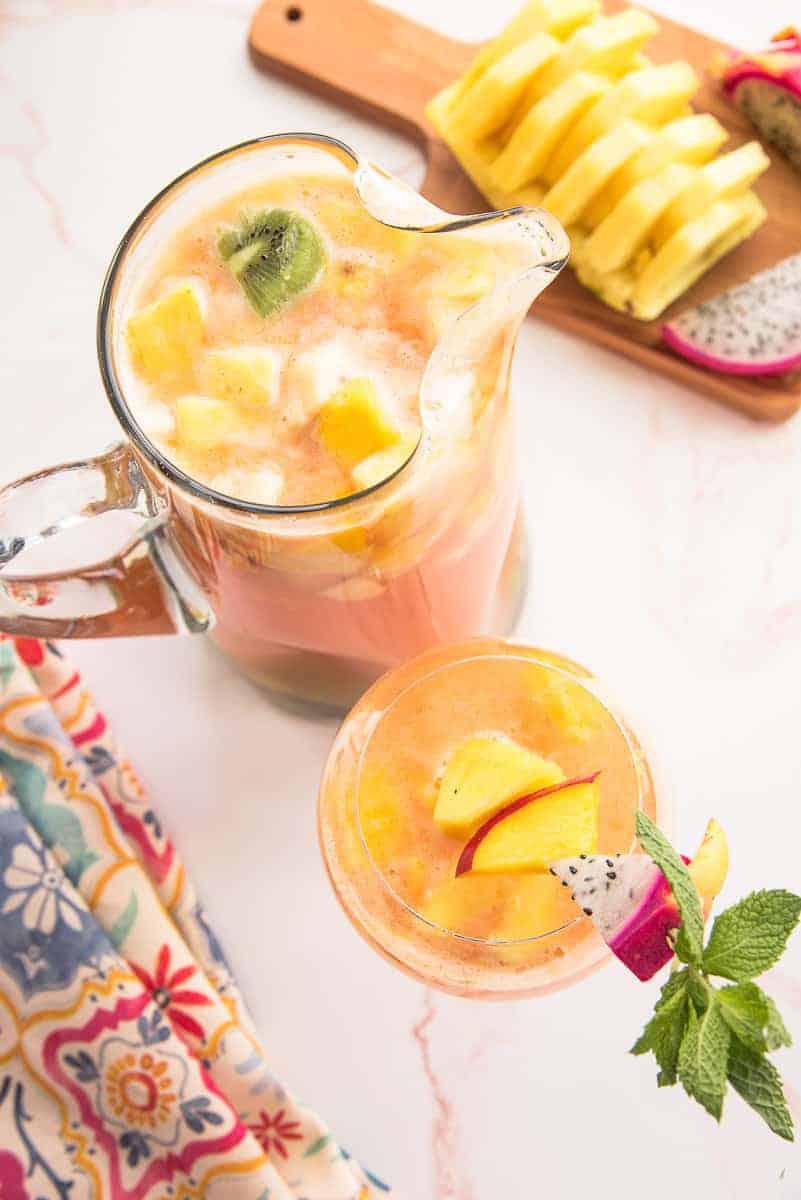
You should serve tropical sangria in a red wine goblet. A wide bowl gives the alcohol a chance to breathe and also makes it easier to get to the fruits inside the glass. The fruits must be eaten. Tis’ the rule.
A glass with a stem is preferred so your body heat doesn’t warm the sangria as you drink it.
How Do I Garnish It?
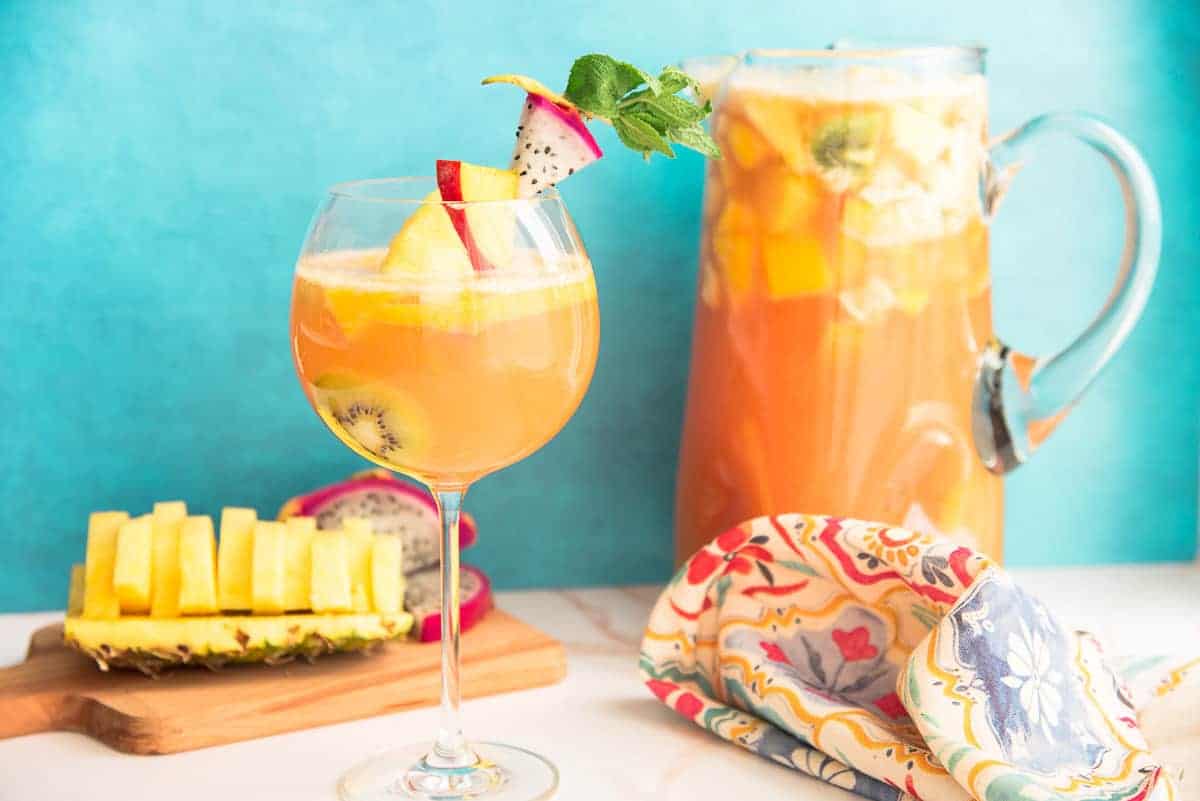
I garnish my tropical sangria with triangles of dragon fruit, mango, and pineapple speared on a cocktail skewer. I threaded two sprigs of mint through the top of the skewer, and that’s that.
You don’t have to garnish the sangria since the drink is pretty enough. If you want to keep it super simple, cut a slice of pineapple in half, nick it towards the upper 1/3 of the half, and hang it on the rim of the glasses.
What Are Some Recipes To Serve With Tropical Sangria?
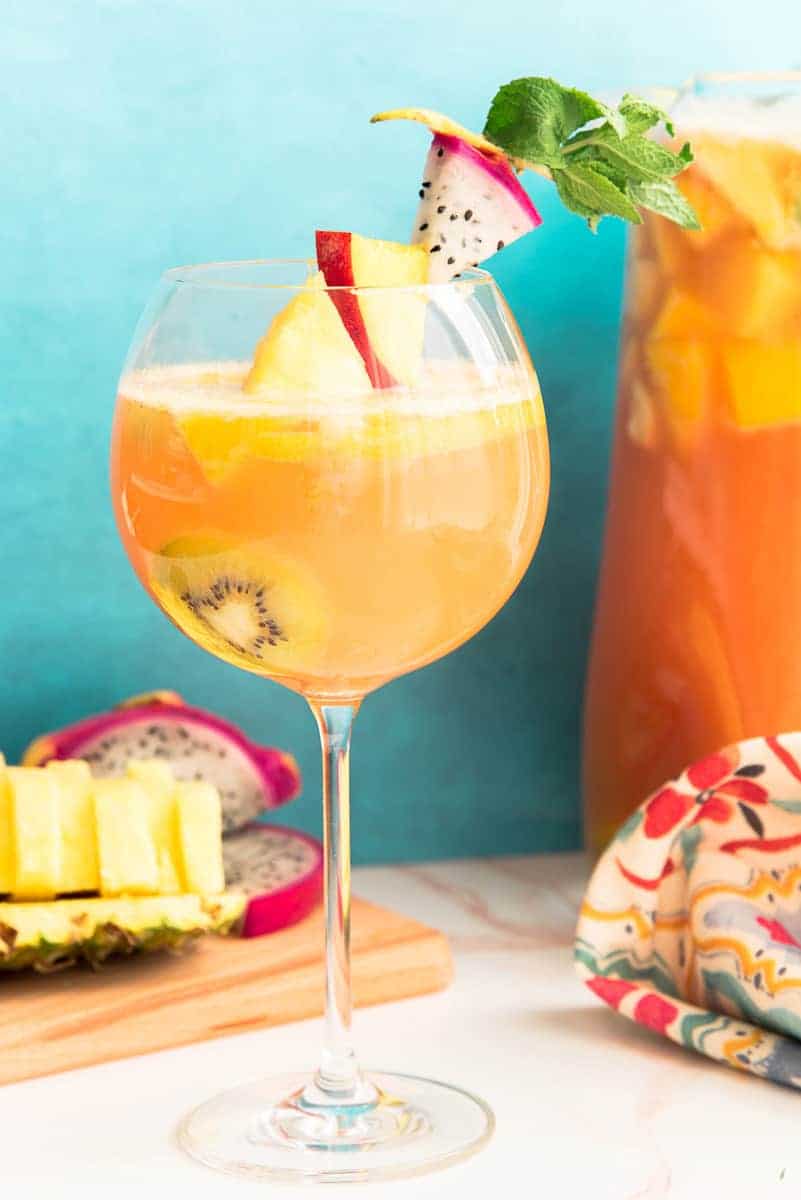
Some recipes to serve with tropical sangria are:
-
Pinchos de Cerdo (Pork Skewers)
-
Pico de Gallo and fresh tortilla chips
-
Mofongo Burgers
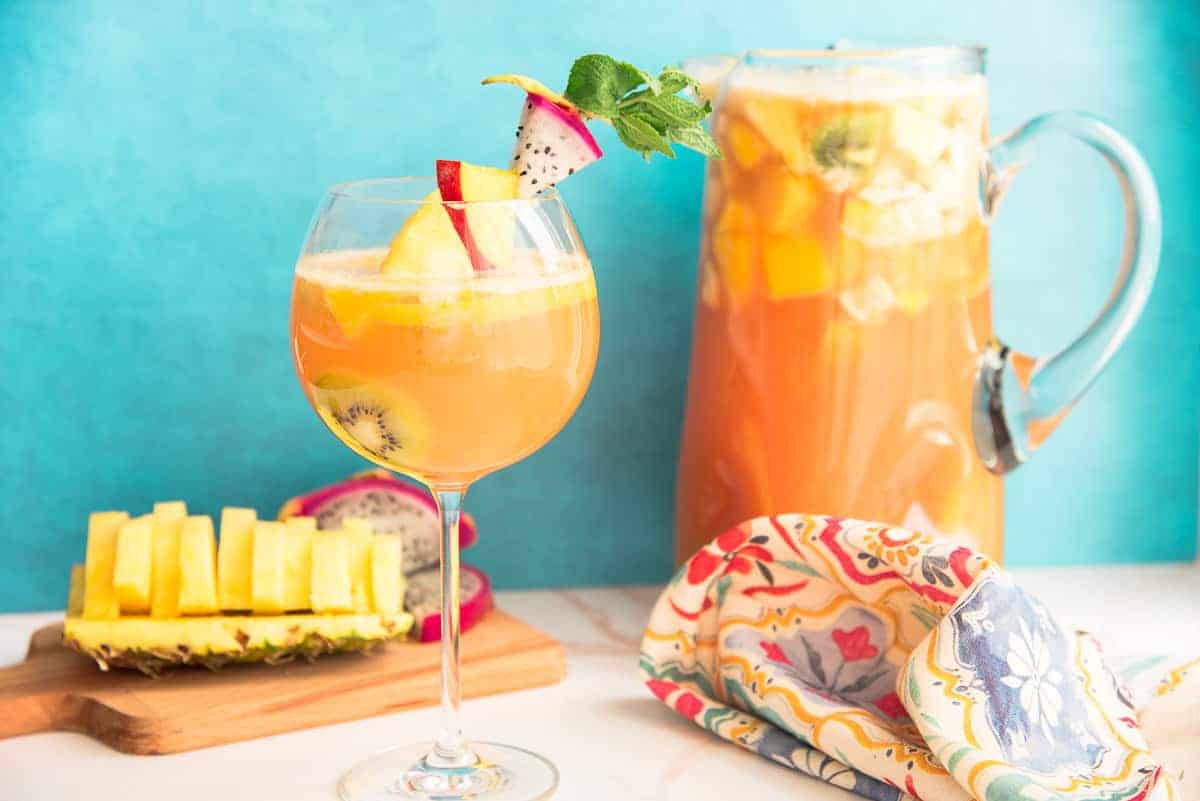
Of course, you can enjoy Tropical Sangria on its own. Be sure to drink responsibly. Remember, that liquor will sneak up on you!
The tropical sangria will make your parties the talk of the neighborhood with its refreshing, tropical flavors. Its bright, unique flavor will leave your guests begging for the recipe, so don’t forget to share it with your friends. Be sure to pin it to your drinks board for upcoming parties, too!
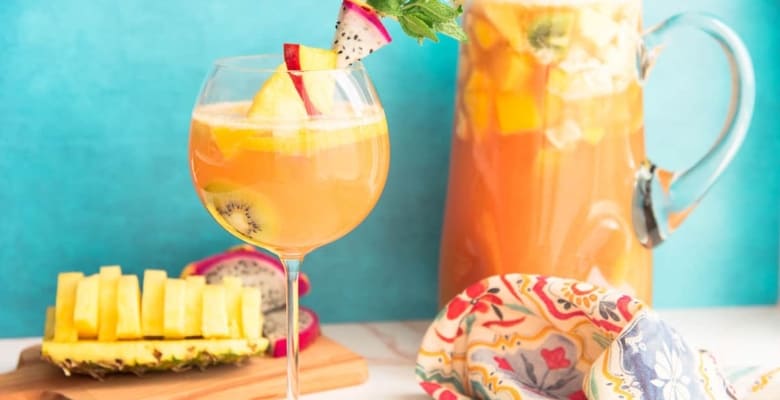
Tropical Sangria
at Sense & EdibilityEquipment
- Large glass pitcher
- cocktail stirrer
Ingredients
For the Simple Syrup (optional)
- 1/4 cup (59 milliliters) cold water
- 1/4 cup (50 grams) granulated sugar
For the Tropical Sangria
- 1 bottle (750 milliliters) white wine (sauvignon blanc, resiling, or pinot grigio)
- 1 cup (237 milliliters) guava nectar
- 3/4 cup (178 milliliters) pineapple juice
- 1/2 cup (118 milliliters) white rum
- 1/4 cup (59 milliliters Cointreau (or triple sec)
- 1/4 cup (59 milliliters) Licor 43
- 1/4 cup (59 milliliters) passion fruit liqueur (Passoã)
- 1/4 cup (59 milliliters) peach schnapps
- 1 1/2 tablespoon lime juice (from one large lime)
- 1 bottle (750 milliliters) moscato to float, optional
Tropical Fruit Add-Ins
- 1 large mango peeled and diced
- 1/2 pineapple peeled, cored, and diced
- 2 kiwi fruits peeled and diced
- 1 large pink guava peeled and diced
- 1 pint berries raspberries, blueberries, strawberries, etc
- 2 cups papaya diced
Instructions
Prepare the Simple Syrup (optional)
- In a small saucepot, stir together the sugar and water. Bring this mixture up to a simmer over medium heat, occasionally stirring to dissolve the sugar.
- Once the mixture comes to a simmer, allow it to cook for another minute. The sugar should be completely dissolved. Remove the pot from the stove and allow the simple syrup to cool completely before using.
- The simple syrup can be poured into a jar and stored, covered in the fridge for up to 1 week.
Prepare the Tropical Sangria
- In a large pitcher, add the white wine, guava nectar, pineapple juice, white rum, Cointreau, Licor 43, passion fruit liqueur, peach schnapps, lime juice, and anywhere from half to all of the simple syrup.
- Add the prepared fruits to the pitcher of sangria. And stir to incorporate them into the drink.Chill the sangria for 1-2 hours to allow the flavors of the fruit to infuse into the sangria*.
- Before serving, float the Moscato over the sangria in the pitcher. Alternatively, you can serve the chilled Moscato on the side and allow your guests to add it as desired.
- Pour the Tropical Sangria into red wine goblets and garnish with your choice of fruits. A skewer is recommended to allow your guests an easier way to eat the fruits. Serve the sangria within 2 days of adding the fruits.
Notes
Swaps and Subs for:
- Sauvignon Blanc: dry riesling, chardonnay or pinot grigio
- Guava nectar: mango nectar, passion fruit juice, or pineapple juice
- Pineapple juice: orange juice, passion fruit juice, or lemonade
- White rum: tequila blanco, vodka, or gin
- Cointreau: Grand Marnier, triple sec, orange curaçao
- Licor 43: peach schnapps or Cointreau
- Passoã: passion fruit juice, pomegranate liqueur, or Chambord
- Peach Schnapps: apricot liqueur, grapefruit liqueur, or pear liqueur
- Moscato: prosecco, champagne, rosé, or more dry white wine
Non-Tropical Fruit Suggestions:
- apple chunks
- raspberries
- blackberries
- blueberries
- sliced strawberries
- pear chunks
- peach chunks
Nutrition

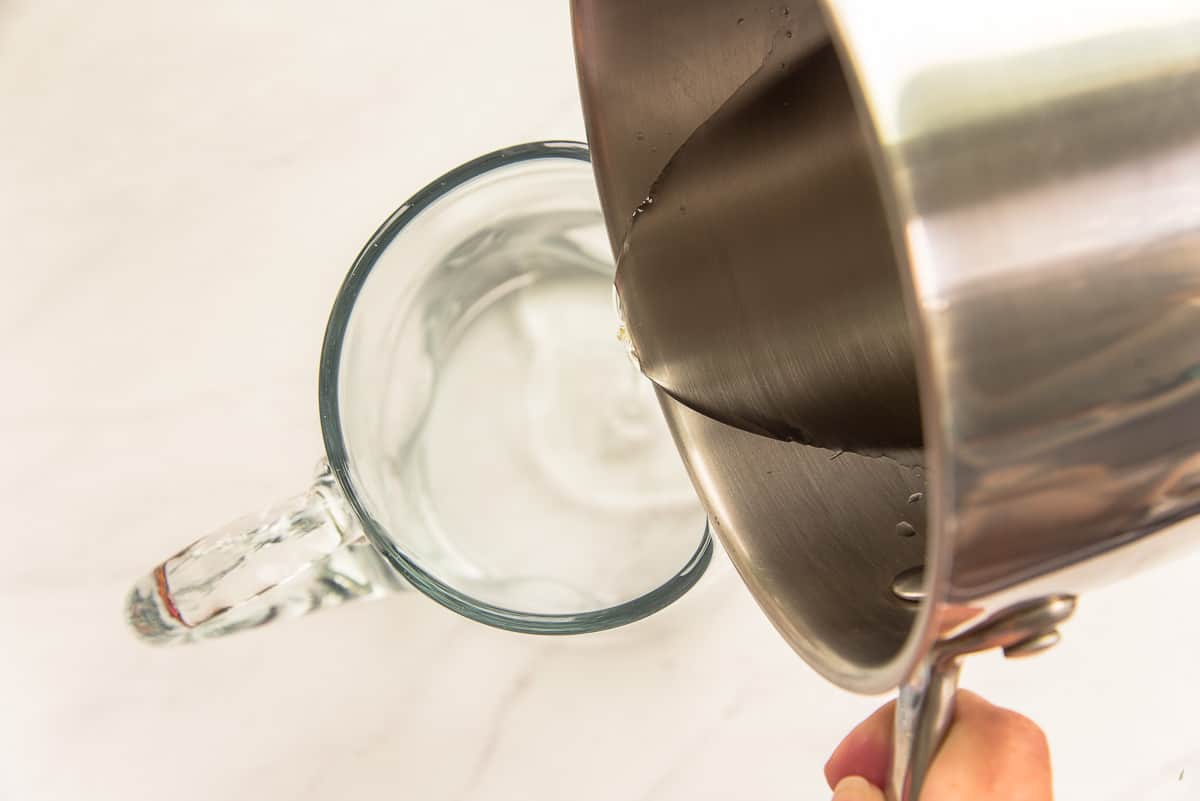
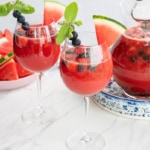
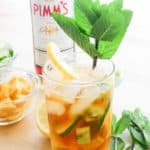
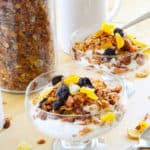
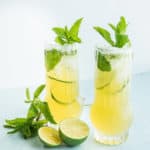

Such a beautiful drink! You have garnished it so nicely and I just love all those tropical flavors – especially the guava nectar! It’s my favorite!
I’m so glad you enjoyed it, Amy!
Wow! Just wow! I could dive right into this sangria. You’ve got some incredible tropical flavours going on here and I’m all for it! I think I’m going to source out some of those fancy tropical liqueurs just to make this!
I’m so glad to know that Nicole!
This tropical sangria looks so tasty and really gets me in the mood for summer. Thanks for sharing
So glad you liked it!